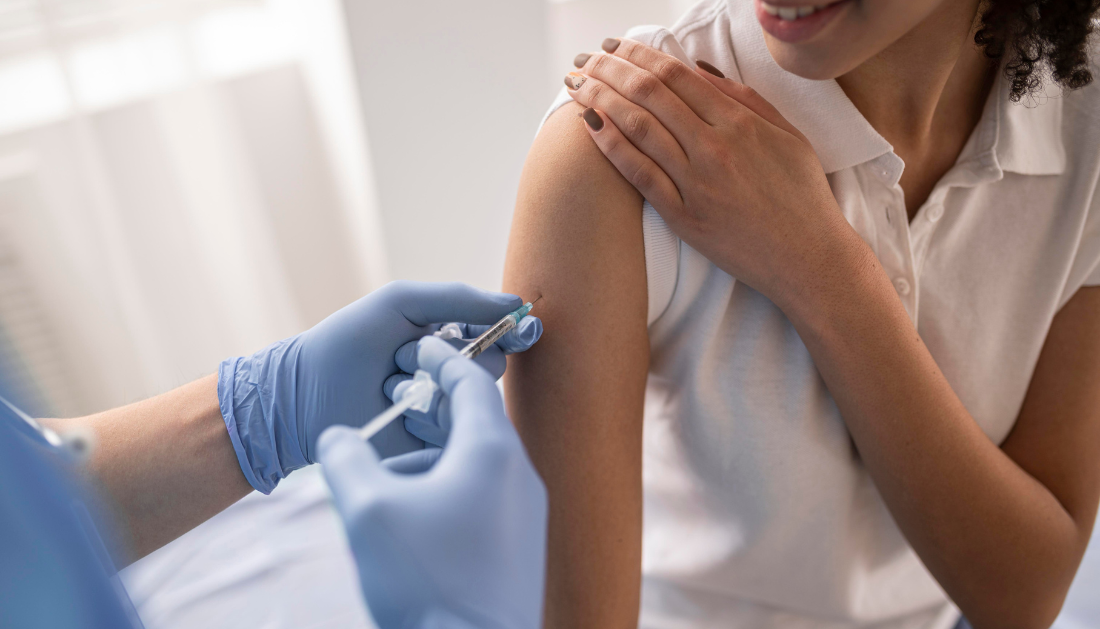

Our bodies often require weeks after receiving a COVID immunization to establish protective antibody responses. Consider a vaccination that increases the generation of antibodies against SARS-CoV-2, the virus that causes COVID-19. A research team led by Rong Hai, an associate professor of microbiology and plant pathology at the University of California, Riverside, created such a vaccine by leveraging preexisting immunity to a different virus (the influenza virus) to help kickstart the process of producing antibodies against SARS-CoV-2.
“Any delay in the immune response to SARS-CoV-2 means there is some time when people are left poorly protected against the virus,” Hai said. “Our vaccine is designed to get people those protective antibody responses faster, so they are not vulnerable to the coronavirus. This is better protection for everyone. It could be especially valuable for people who still lack immunity to SARS-CoV-2, such as children.”
Hai and his colleagues used SARS-CoV-2 as a model pandemic virus to create a “fusion protein” vaccine that combines the nucleoprotein from the influenza A virus with the receptor-binding domain, or RBD, of the SARS-CoV-2 spike protein. The SARS-CoV-2 virus attaches to a receptor on the surface of cells via the spike protein, which is the initial stage in the virus’s infection. Antibodies against RBD disrupt the spike protein’s interaction with the receptor, preventing the virus from infecting the cell.
The new vaccine design tackles a long-standing issue in virology: the delay in generating protective adaptive immunity to emerging viral infections. Hai said that in any infection, antibodies are produced by a type of cell known as the B cell. Each B cell makes one antibody against a single target; however, only a small proportion of B cells can create antibodies against RBD.
“For more B cells to become activated and start producing antibodies against RBD, two steps are needed,” said Harrison Dulin, the first author of the paper and a graduate student in Hai’s lab. “First, the B cell needs to encounter the RBD protein, and second, the B cell needs to be activated by another cell called a helper T cell. At the start of an immune response against SARS-CoV-2, there are only a few helper T cells around that can help activate the RBD-specific B cells. This causes a delay in mounting the antibody response against the pathogen.”
According to Hai, the new vaccine formulation has the benefit of allowing RBD-specific B cells to seek assistance from a pool of readily available helper T cells produced in response to a flu infection.
“The flu helper T cells are harnessed to activate the RBD-specific B cells, speeding up the process of antibody production,” he said.
Fortunately, the new design can be implemented even in countries with low financial resources.
“Given the simplicity of our new design, it would not require these countries to acquire any additional complicated or expensive equipment,” Hai said. “We designed the vaccine so that it could be administered the same way as currently available vaccines.”
The new design evolved from another research led by Hai, which sought to create a dual vaccine platform for both influenza and SARS-CoV-2 virus. Although the researchers only tested the vaccine against SARS-CoV-2, the new design has the potential to accelerate antibody responses to other emerging viruses.
“It could be especially useful if we ever have to deal with SARS-CoV-3 or some other novel pandemic virus,” said co-author Emma H. Wilson, a professor of biomedical sciences at the UCR School of Medicine.
Hai emphasized that additional research needs to be done in the lab before the newly developed vaccine is made available to the public.
“So far, we have only tested the vaccine in mice,” Hai said. “We need to explore through clinical trials if this vaccine is safe for humans. It’s a long process. Further, preexisting immunity to influenza can vary from person to person, and we know that immune responses can wane over time. We need to test this vaccine in a range of immune backgrounds to see how widely applicable our strategy is.”
The study endeavor utilized the recently created biosafety level 3 (BSL-3) lab at UCR.
“We needed to show that the antibody responses produced by our vaccine could effectively neutralize live SARS-CoV-2,” Hai said. “Because SARS-CoV-2 is a dangerous and highly contagious virus, working with live versions of the virus can only be done in BSL-3 labs.”
Duo Xu, Arrmund Neal, Edward Vizcarra, Jerald Chavez, Arzu Ulu, Keidy Wuang, Nikhil Bhakta, and Chanvoraboth Chea of UCR, as well as Ramya S. Barre, Myeon-Sik Yang, Siddiqur Rahman Khan, and Luis Martinez-Sobrido of the Texas Biomedical Research Institute in San Antonio, participated in the study with Hai, Wilson, and Dulin. Dulin is now a postdoctoral researcher at the Fred Hutchinson Cancer Research Center, which studies infectious diseases.
For more information: Harrison Dulin et al, Harnessing preexisting influenza virus-specific immunity increases antibody responses against SARS-CoV-2, Journal of Virology (2024). DOI: 10.1128/jvi.01571-23
more recommended stories
 Cognitive Distraction From Conversation While Driving
Cognitive Distraction From Conversation While DrivingKey Takeaways (Quick Summary) Talking, not.
 Fat-Regulating Enzyme Offers New Target for Obesity
Fat-Regulating Enzyme Offers New Target for ObesityKey Highlights (Quick Summary) Researchers identified.
 Spatial Computing Explains How Brain Organizes Cognition
Spatial Computing Explains How Brain Organizes CognitionKey Takeaways (Quick Summary) MIT researchers.
 Gestational Diabetes Risk Identified by Blood Metabolites
Gestational Diabetes Risk Identified by Blood MetabolitesKey Takeaways (Quick Summary for Clinicians).
 Phage Therapy Study Reveals RNA-Based Infection Control
Phage Therapy Study Reveals RNA-Based Infection ControlKey Takeaways (Quick Summary) Researchers uncovered.
 Pelvic Floor Disorders: Treatable Yet Often Ignored
Pelvic Floor Disorders: Treatable Yet Often IgnoredKey Takeaways (Quick Summary) Pelvic floor.
 Urine-Based microRNA Aging Clock Predicts Biological Age
Urine-Based microRNA Aging Clock Predicts Biological AgeKey Takeaways (Quick Summary) Researchers developed.
 Circadian Control of Neutrophils in Myocardial Infarction
Circadian Control of Neutrophils in Myocardial InfarctionKey Takeaways for HCPs Neutrophil activity.
 E-Cigarette Use and Heart Attack Risk in Former Smokers
E-Cigarette Use and Heart Attack Risk in Former SmokersKey Takeaways for Clinicians and Nurses.
 High-Intensity Training and Oxidative Stress Insights
High-Intensity Training and Oxidative Stress InsightsNew Evidence Linking High-Intensity Training and.

Leave a Comment